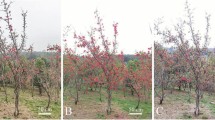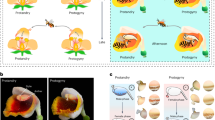Abstract
IN the first number of NATURE, (for Nov. 4, 1869,) I ventured on a hypothesis, founded on a series of observations, that plants which flower in the winter have their organs of reproduction specially arranged to promote self-fertilisation. The following fact, which has just come under my notice, appears to confirm this theory. Plants belonging to the order Caryophyllacæ are, as a rule, strongly protandrous (see my paper in the Journal of Botany for October 1870), the anthers discharging their pollen at so long an interval before the maturing of the stigma as to render cross-fertilisation almost inevitable. The other day, Oct. 21, I came across a late flowering patch of Stellaria aquatica Scop., in which the anthers were discharging their pollen simultaneously with the maturing of the stigmas, each of the five styles being curled in a singular manner round one of the stamens, so as to bring the stigmatic surface in actual contatct with the dehiscing anther. This occurred in several flowers that were just opening, and there was abundance of seminiferous capsules on the plants.
This is a preview of subscription content, access via your institution
Access options
Subscribe to this journal
Receive 51 print issues and online access
$199.00 per year
only $3.90 per issue
Buy this article
- Purchase on SpringerLink
- Instant access to full article PDF
Prices may be subject to local taxes which are calculated during checkout
Similar content being viewed by others
Rights and permissions
About this article
Cite this article
BENNETT, A. Winter Fertilisation. Nature 4, 506 (1871). https://doi.org/10.1038/004506b0
Issue date:
DOI: https://doi.org/10.1038/004506b0



